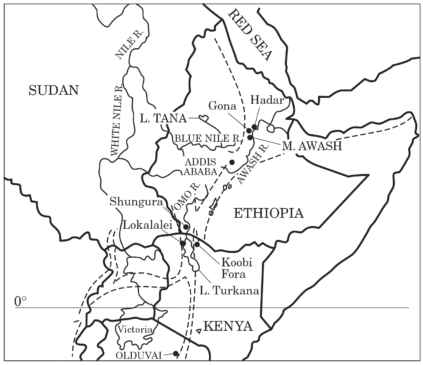Nat Geo’s “Out of Eden†to start trek in Afar region
By Kaleyesus Bekele
 Addis Ababa, Ethiopia - The National Geographic Channel, the world’s number one documentary channel, in collaboration with freelance journalist Paul Salopek are to launch an exploration project in the Afar region dubbed “Out of Eden.â€Â
Addis Ababa, Ethiopia - The National Geographic Channel, the world’s number one documentary channel, in collaboration with freelance journalist Paul Salopek are to launch an exploration project in the Afar region dubbed “Out of Eden.â€Â
Early next month, two-time Pulitzer Prize-winning journalist Salopek will embark on a foot journey that retraces the route of the first anatomically modern humans to disperse across the world. Starting in the Great Rift Valley of Africa, this immense narrative journey spans 60,000 years of human history, about 34,000 kilometers of the planet’s surface and roughly seven years of the author’s life. Guided by the latest fossil and genetic evidence, the route will lead from Ethiopia into the Levant; eastward through the steppes of Central Asia to the Chinese coast, and then north into Siberia; after crossing the Bering Strait by ship to Alaska, the final leg of the trek proceeds down the western flank of the Americas, to our species’ continental “land’s end†in Patagonia.
Continuously on foot, the ‘Out of Eden’ project will pace off a unique storytelling transect of the world at the turn of the new millennium. Paul, who produces the work for National Geography, says, “It revives the defining migration that made us human. And by inching through the most important global stories of our day incrementally, at ground level, it will generate original journalism that explores the hidden connections between stories as diverse as human conflict and landscape, global climate change and local innovation, technology and cultural endurance. It will render current events as a form of pilgrimage. A global audience will walk along via a high-quality, interactive Web portal that features episodic multimedia content: long-form articles, streaming video, audio and blogs.â€Â
Paul will start the walk in January, from the Herto Buri locality in the Afar Region. He will cross the remote arid region of the Afar to Djibouti. After crossing the desert to the port of Djibouti he will then cross the Red Sea by boat to Saudi Arabia then to the Middle East, to Israel where he will rest for three months. His travels will cover India, China, Siberia, Alaska and the Americas. The entirety of his walk will take seven years and cover 20,000 miles. Paul plans to finalise the walk by 2019. “This project will promote Ethiopia as the cradle of mankind internationally,†Paul stated. Paul acknowledged the kind cooperation provided by the Ministry of Culture and Tourism, the Ministry of Foreign Affairs, the Government Communications Affairs Office and the Ethiopian Airlines.
“The plan is to start walking in the Afar region in early January, 2013. I will start from one of the oldest sites where human fossils have been found, near the village of Herto, in the Middle Awash region. From Herto, I will walk about 300-350 km north and east into Djibouti, and will cross the border checkpoint, doing the usual border formalities, at the main commercial road. I will be walking all the time with local Afar guides supplied by the famous Ethiopian and American scientists who have been digging for human ancestors in the Afar region for many decades,†Salopek explains. The walk from Herto Buri to the Djiboutian border will take 25 days. Salopek will be accompanied by a professional photographer from National Geographic, John Stanmeyer.
Ethiopian government officials agree that the “Out of Eden†project will promote Ethiopia as a cradle of mankind.
Source: thereporterethiopia.com



